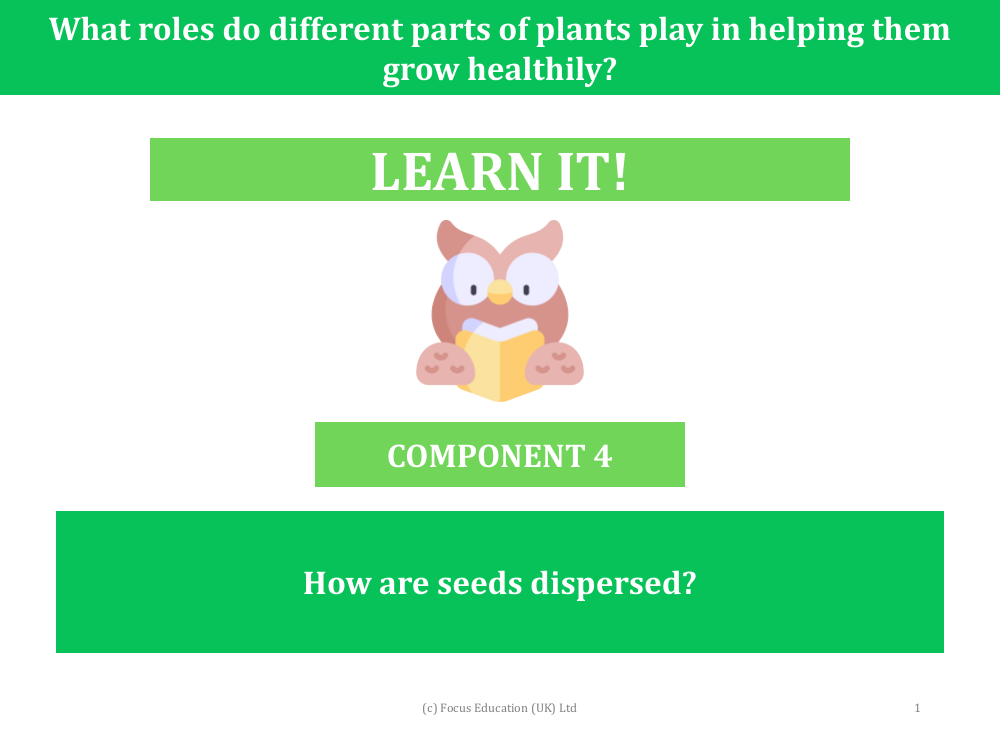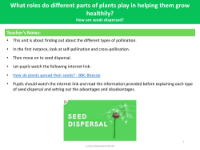How are seeds dispersed? - presentation

Science Resource Description
Seed dispersal is a crucial process in the life cycle of a plant, ensuring that offspring are spread out and can grow in new locations where they may face less competition and have ample resources. There are several methods by which seeds can be dispersed, each with its own set of advantages and disadvantages. Wind dispersal takes advantage of seeds that are lightweight and may have structures such as wings or parachutes to help them float, glide, or spin through the air. This method allows for a wide distribution, although it is somewhat random and seeds may not land in hospitable environments.
Animals also play a significant role in seed dispersal. Some seeds have hooks or barbs that catch onto the fur of passing animals, hitching a ride to new locations. Other plants produce fruits that are appealing to wildlife; animals eat the fruit and later deposit the seeds elsewhere in their droppings, often with a ready supply of fertilizer. This can be very effective, but relies on the presence and behavior of animals. Another dramatic form of seed dispersal is through explosion, where mature pods burst open, flinging seeds away from the parent plant. This ensures that the seeds are not too crowded, but the range is usually more limited than with wind or animal dispersal.


